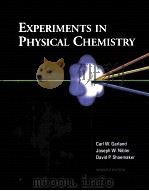《atkins physical chemistry seventh edition P1150》
| 作者 | 编者 |
|---|---|
| 出版 | 未查询到或未知 |
| 参考页数 | |
| 出版时间 | 没有确切时间的资料 目录预览 |
| ISBN号 | 无 — 求助条款 |
| PDF编号 | 820576368(仅供预览,未存储实际文件) |
| 求助格式 | 扫描PDF(若分多册发行,每次仅能受理1册) |
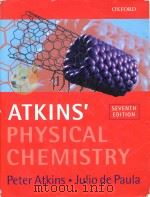
Part 1Equilibrium1
1The properties of gases3
The perfect gas3
1.1The states of gases3
1.2 The gas laws8
Realgases16
1.3Molecular interactions16
1.4 The van der Waals equation19
1.5 The principle of corresponding states23
Checklist of key ideas24
Further reading25
Exercises26
Problems28
2The First Law:the concepts30
The basic concepts30
2.1Work,heat,and energy31
2.2 The First Law33
Work and heat37
2.3Expansion work37
2.4 Heat transactions41
2.5 Enthalpy45
2.6 Adiabatic changes52
Thermochemistry55
2.7Standard enthalpy changes55
2.8 Standard enthalpies of formation60
2.9 The temperature dependence of reaction enthalpies62
Checklist of key ideas64
Further reading65
Exercises66
Problems69
3The First Law:the machinery73
State functions and exact differentials73
3.1State and path functions73
3.2 Exact and inexact differentials74
Thermodynamic consequences75
3.3Changes in internal energy75
3.4 The temperature dependence of the enthalpy79
3.5 The relation between Cv and Cp85
Checklist of key ideas86
Further reading87
Exercises87
Problems88
4 The Second Law:the concepts90
The direction of spontaneous change90
4.1The dispersal of energy91
4.2 Entropy92
4.3 Entropy changes accompanying specific processes100
4.4 The Third Law of thermodynamics106
Concentrating on the system108
4.5The Helmholtz and Gibbs energies108
4.6 Standard molar Gibbs energies114
Checklist of key ideas115
Further reading116
Exercises116
Problems118
5The Second Law:the machinery121
Combining the First and Second Laws121
5.1The fundamental equation121
5.2 Properties of the internal energy122
Properties of the Gibbs energy124
5.3General considerations124
5.4 The variation of the Gibbs energy with temperature126
5.5 The variation of the Gibbs energy with pressure127
Checklist of key ideas130
Further reading131
Exercises131
Problems132
6Physical transformations of pure substances135
Phase diagrams135
6.1The stabilities of phases135
6.2 Phase boundaries136
6.3 Three typical phase diagrams138
Phase stability and phase transitions140
6.4The thermodynamic criterion of equilibrium141
6.5 The dependence of stability on the conditions141
6.6 The location of phase boundaries144
6.7 The Ehrenfest classification of phase transitions148
The physical liquid surface150
6.8Surface tension150
6.9 Curved surfaces151
6.10 Capillary action153
Checklist of key ideas155
Further reading156
Exercises156
Problems157
7 Simple mixtures160
The thermodynamic description of mixtures160
7.1Partial molar quantities161
7.2 The thermodynamics of mixing166
7.3 The chemical potentials of liquids168
The properties of solutions172
7.4Liquid mixtures173
7.5 Colligative properties175
Activities182
7.6The solvent activity182
7.7 The solute activity183
7.8 The activities of regular solutions186
Checklist of key ideas187
Further reading188
Exercises189
Problems190
8Phase diagrams193
Phases,components,and degrees of freedom193
8.1Definitions193
8.2 The phase rule195
Two-component systems198
8.3Vapour pressure diagrams198
8.4 Temperature-composition diagrams202
8.5 Liquid-liquid phase diagrams204
8.6 Liquid-solid phase diagrams208
Checklist of key ideas214
Further reading214
Exercises215
Problems218
9Chemical equilibrium222
Spontaneous chemical reactions222
9.1The Gibbs energy minimum222
9.2 The description of equilibrium226
The response of equilibria to the conditions233
9.3How equilibria respond to pressure234
9.4 The response of equilibria to temperature235
9.5 The response of equilibria to pH240
Checklist of key ideas246
Further reading246
Exercises247
Problems249
10 Equilibrium electrochemistry252
The thermodynamic properties of ions in solution252
10.1Thermodynamic functions of formation253
10.2 Ion activities256
Electrochemical cells262
10.3Half-reactions and electrodes263
10.4 Varieties of cells265
10.5 Standard potentials270
Applications of standard potentials274
10.6The electrochemical series274
10.7 The measurement of pH and pKa277
10.8 Thermodynamic functions280
Checklist of key ideas282
Further reading283
Exercises284
Problems286
Part 2Structure291
11Quantum theory:introduction and principles293
The origins of quantum mechanics293
11.1 The failures of classical physics294
11.2Wave-particle duality299
The dynamics of microscopic systems304
11.3The Schrodinger equation304
11.4 The Born interpretation of the wavefunction306
Quantum mechanical principles309
11.5The information in a wavefunction310
11.6 The uncertainty principle317
Checklist of key ideas320
Further reading321
Exercises322
Problems323
12Quantum theory:techniques and applications325
Translational motion325
12.1A particle in a box326
12.2 Motion in two and more dimensions331
12.3 Tunnelling334
Vibrational motion338
12.4 The energy levels338
12.5The wavefunctions339
Rotational motion345
12.6Rotation in two dimensions:the particle on a ring345
12.7 Rotation in three dimensions:the particle on a sphere349
12.8 Spin354
Techniques of approximation355
12.9 Time-independent perturbation theory355
12.10 Time-dependent perturbation theory358
Checklist of key ideas360
Further reading361
Exercises361
Problems363
13Atomic structure and atomic spectra365
The structure and spectra of hydrogenic atoms366
13.1The structure of hydrogenic atoms367
13.2 Atomic orbitals and their energies372
13.3 Spectroscopic transitions and selection rules381
The structures of many-electron atoms383
13.4 The orbital approximation384
13.5 Self-consistent field orbitals392
The spectra of complex atoms393
13.6Quantum defects and ionization limits395
13.7 Singlet and triplet states395
13.8 Spin-orbit coupling396
13.9 Term symbols and selection rules399
Checklist of key ideas404
Further reading405
Exercises406
Problems408
14Molecular structure410
The Born-Oppenheimer approximation410
Valence-bond theory411
14.1 The hydrogen molecule411
14.2Homonuclear diatomic molecules413
14.3 Polyatomic molecules414
Molecular orbital theory417
14.4 The hydrogen molecule-ion418
14.5The structures of diatomic molecules422
14.6 Heteronuclear diatomic molecules427
Molecular orbitals for polyatomic systems432
14.7The Huckel approximation433
14.8 Extended Huckel theory438
14.9 Self-consistent field calculations441
Checklist of key ideas446
Further reading447
Exercises448
Problems450
15Molecular symmetry453
The symmetry elements of objects453
15.1Operations and symmetry elements454
15.2 The symmetry classification of molecules456
15.3 Some immediate consequences of symmetry459
Character tables463
15.4 Character tables and symmetry labels463
15.5 Vanishing integrals and orbital overlap469
15.6 Vanishing integrals and selection rules474
Checklist of key ideas476
Further reading477
Exercises477
Problems478
16 Spectroscopy 1:rotational and vibrational spectra481
General features of spectroscopy483
16.1Experimental techniques483
16.2 The intensities of spectral lines491
16.3 Linewidths495
Pure rotation spectra497
16.4Moments of inertia497
16.5 The rotational energy levels500
16.6 Rotational transitions504
16.7 Rotational Raman spectra507
16.8 Nuclear statistics and rotational states510
The vibrations of diatomic molecules511
16.9Molecular vibrations512
16.10 Selection rules513
16.11 Anharmonicity515
16.12 Vibration-rotation spectra517
16.13 Vibrational Raman spectra of diatomic molecules519
The vibrations of polyatomic molecules520
16.14 Normal modes520
16.15 Infrared absorption spectra of polyatomic molecules523
16.16 Vibrational Raman spectra of polyatomic molecules524
16.17 Symmetry aspects of molecular vibrations526
Checklist of key ideas529
Further reading531
Exercises532
Problems534
17Spectroscopy 2:electronic transitions538
The characteristics of electronic transitions539
17.1 The electronic spectra of diatomic molecules539
17.2 The electronic spectra of polyatomic molecules545
The fates of electronically excited states550
17.3Fluorescence and phosphorescence550
17.4 Dissociation and predissociation552
Lasers553
17.5 General principles of laser action554
17.6Practical lasers558
17.7 Applications of lasers in chemistry562
Photoelectron spectroscopy568
17.8The technique568
17.9 Ultraviolet photoelectron spectroscopy569
17.10 X-ray photoelectron spectroscopy570
Checklist of key ideas571
Further reading573
Exercises574
Problems575
18Spectroscopy 3:magnetic resonance579
The effect of magnetic fields on electrons and nuclei579
18.1 The energies of electrons in magnetic fields580
18.2 The energies of nuclei in magnetic fields581
18.3 Magnetic resonance spectroscopy583
Nuclear magnetic resonance583
18.4The NMR spectrometer584
18.5 The chemical shift585
18.6 The fine structure590
Pulse techniques in NMR599
18.7The magnetization vector599
18.8 Linewidths and rate processes602
18.9 Spin decoupling607
18.10 The nuclear Overhauser effect608
18.11 Two-dimensional NMR610
18.12 Solid-state NMR614
Electron spin resonance615
18.13 The ESR spectrometer615
18.14 The g-value617
18.15 Hyperfine structure618
Checklist of key ideas621
Further reading623
Exercises624
Problems626
19 Statistical thermodynamics:the concepts628
The distribution of molecular states629
19.1 Configurations and weights629
19.2 The molecular partition function634
The internal energy and the entropy639
19.3 The internal energy640
19.4 The statistical entropy642
The canonical partition function647
19.5 The canonical ensemble647
19.6 The thermodynamic information in the partition function648
19.7Independent molecules649
Checklist of key ideas652
Further reading652
Exercises653
Problems654
20 Statistical thermodynamics:the machinery656
Fundamental relations656
20.1The thermodynamic functions656
20.2 The molecular partition function658
Using statistical thermodynamics667
20.3Mean energies667
20.4 Heat capacities669
20.5 Equations of state671
20.6 Residual entropies672
20.7 Equilibrium constants674
Checklist of key ideas681
Further reading682
Exercises682
Problems683
21Molecular interactions686
Electric properties of molecules686
21.1Electric dipole moments686
21.2 Polarizabilities689
21.3 Relative permittivities692
21.4 Refractive index694
Interactions between molecules696
21.5Interactions between dipoles698
21.6 Repulsive and total interactions705
21.7 Molecular interactions in gases706
21.8 Molecular interactions in liquids709
Checklist of key ideas713
Further reading715
Exercises715
Problems716
22 Macromolecules and aggregates719
Structure and dynamics720
22.1The different levels of structure720
22.2 Random coils721
22.3 The structure of proteins725
22.4 The structure of nucleic acids729
22.5 The stability of biological polymers731
Determination of size and shape732
22.6Mean molar masses732
22.7 Mass spectrometry735
22.8 Laser light scattering736
22.9 Ultracentrifugation742
22.10 Electrophoresis745
22.11 Size-exclusion chromatography747
22.12 Viscosity748
Self-assembly750
22.13 Colloids752
22.14 Micelles and biological membranes754
22.15 Surface films757
Checklist of key ideas760
Further reading762
Exercises763
Problems764
23The solid state767
Crystal lattices767
23.1Lattices and unit cells767
23.2 The identification of lattice planes770
23.3 The investigation of structure772
23.4 Neutron and electron diffraction783
Crystal structure784
23.5Metallic solids784
23.6 Ionic solids786
23.7 Molecular solids and covalent networks789
The properties of solids791
23.8 Mechanical properties791
23.9Electrical properties795
23.10 Magnetic properties801
Checklist of key ideas805
Further reading807
Exercises808
Problems810
Part 3Change813
24Molecules in motion815
Molecular motion in gases815
24.1 The kinetic model of gases816
24.2 Collisions with walls and surfaces822
24.3 The rate of effusion824
24.4 Transport properties of a perfect gas826
Molecular motion in liquids832
24.5 Experimental results832
24.6 The conductivities of electrolyte solutions833
24.7 The mobilities of ions835
24.8 Conductivities and ion-ion interactions841
Diffusion842
24.9The thermodynamic view842
24.10 The diffusion equation846
24.11 Diffusion probabilities852
24.12 The statistical view853
Checklist of key ideas854
Further reading856
Exercises856
Problems859
25The rates of chemical reactions862
Empirical chemical kinetics862
25.1Experimental techniques863
25.2 The rates of reactions866
25.3 Integrated rate laws871
25.4 Reactions approaching equilibrium876
25.5 The temperature dependence of reaction rates879
Accounting for the rate laws882
25.6Elementary reactions882
25.7 Consecutive elementary reactions883
25.8 Unimolecular reactions890
Checklist of key ideas892
Further reading893
Exercises894
Problems896
26 The kinetics of complex reactions899
Chain reactions899
26.1The rate laws of chain reactions900
26.2 Explosions902
Polymerization kinetics904
26.3 Stepwise polymerization904
26.4Chain polymerization906
Homogeneous catalysis908
26.5Features of homogeneous catalysis909
26.6 Enzymes909
Oscillating reactions914
26.7 Autocatalysis915
26.8Autocatalytic mechanisms of oscillating reactions916
26.9 Bistability917
26.10 Chemical chaos919
Photochemistry920
26.11 Kinetics of photophysical and photochemical processes927
26.12 Complex photochemical processes934
Checklist of key ideas936
Further reading937
Exercises938
Problems940
27Molecular reaction dynamics944
Reactive encounters944
27.1Collision theory945
27.2 Diffusion-controlled reactions951
27.3 The material balance equation954
Activated complex theory956
27.4The Eyring equation956
27.5 Thermodynamic aspects960
The dynamics of molecular collisions963
27.6Reactive collisions963
27.7 Potential energy surfaces966
27.8 Some results from experiments and calculations967
Checklist of key ideas971
Further reading972
Exercises973
Problems974
28Processes at solid surfaces977
The growth and structure of solid surfaces977
28.1Surface growth977
28.2 Surface composition979
The extent of adsorption987
28.3Physisorption and chemisorption988
28.4 Adsorption isotherms989
28.5 The rates of surface processes994
Catalytic activity at surfaces999
28.6 Adsorption and catalysis999
28.7Examples of catalysis1001
Checklist of key ideas1006
Further reading1007
Exercises1008
Problems1009
29Dynamics of electron transfer1013
Electron transfer in homogeneous systems1014
29.1Theory of electron transfer processes1014
29.2 Experimental results1018
Electron transfer in heterogeneous systems1021
29.3The electrode-solution interface1021
29.4 The rate of charge transfer1024
29.5 Voltammetry1031
29.6 Electrolysis1036
29.7 Working galvanic cells1037
29.8 Corrosion1039
Checklist of key ideas1041
Further reading1043
Exercises1043
Problems1045
Further information 1Mathematical techniques1048
Basic procedures1048
1.1Logarithms and exponentials1048
1.2 Combinatorial functions1048
1.3 Complex numbers and complex functions1049
1.4 Vectors1050
Calculus1051
1.5Differentiation and integration1051
1.6 Power series and Taylor expansions1052
1.7 Partial derivatives1053
1.8 Undetermined multipliers1054
1.9 Differential equations1055
Matrix algebra1057
1.10Matrix addition and multiplication1058
1.11 Simultaneous equations1059
1.12 Eigenvalue equations1060
Further reading1061
Further information 2 Essential concepts of physics1062
Energy1062
2.1Kinetic and potential energy1062
2.2 Energy units1062
Classical mechanics1063
2.3The trajectory in terms of the energy1063
2.4 Newton’s second law1064
2.5 Rotational motion1064
2.6 The harmonic oscillator1065
Waves1066
2.7The electromagnetic field1066
2.8 Features of electromagnetic radiation1067
Electrostatics1068
2.9The Coulomb interaction1068
2.10 The Coulomb potential1068
2.11 The strength of the electric field1069
2.12 The dipole-dipole interaction1069
2.13 Electric current and power1070
Further reading1070
Data section1071
Answers to exercises1112
Answers to problems1124
Index1137
《atkins physical chemistry seventh edition P1150》由于是年代较久的资料都绝版了,几乎不可能购买到实物。如果大家为了学习确实需要,可向博主求助其电子版PDF文件。对合法合规的求助,我会当即受理并将下载地址发送给你。
高度相关资料
-

- PHYSICAL CHEMISTRY SECOND EDITION
- 1980 ADDISON-WESLEY PUBLISHING COMPANY
-

- PHYSICAL CHEMISTRY SEVENTH EDITION
- 1955年 JOHN WILEY & SONS
-
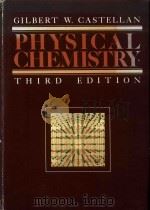
- PHYSICAL CHEMISTRY THIRD EDITION
- 1983 ADDISON-WESLEY PUBLISHING COMPANY
-

- COLLEGE CHEMISTRY FACULTIES SEVENTH EDITION
- 1986 AMERICAN CHEMICAL SOCIETY
-

- Physical chemistry Sixth Edition
- 1998 Oxford University Press
-

- PHYSICAL CHEMISTRY THIRD EDITION
- 1973 MCGRAW-HILL BOOK COMPANY
-

- COLLEGE CHEMISTRY SEVENTH EDITION
- 1977 D.VAN NOSTRAND COMPANY
-

- TEXTBOOK OF PHARMACEUTICAL CHEMISTRY SEVENTH EDITION
- 1960 OXFROD UNIVERSITY PRESS
-
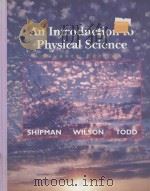
- AN INTRODUCTION TO PHYSICAL SCIENCE SEVENTH EDITION
- 1993 D.C.HEATH AND COMPANY
-
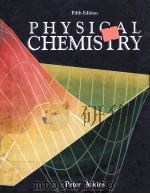
- PHYSICAL CHEMISTRY FIFTH EDITION
- 1994 W.H.FREEMAN AND COMPANY
-
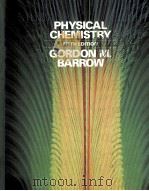
- PHYSICAL CHEMISTRY FIFTH EDITION
- 1988 McGRAW-HILL BOOK COMPANY
-

- SOLUTIONS MANUAL T ACCOMPANY PHYSICAL CHEMISTRY SEVENTH EDITION
- 1987 JOHN WILEY & SONS
-

- VITALIZED CHEMISTRY SEVENTH EDITION
- 1970 College Entrance Book Company
提示:百度云已更名为百度网盘(百度盘),天翼云盘、微盘下载地址……暂未提供。➥ PDF文字可复制化或转WORD
